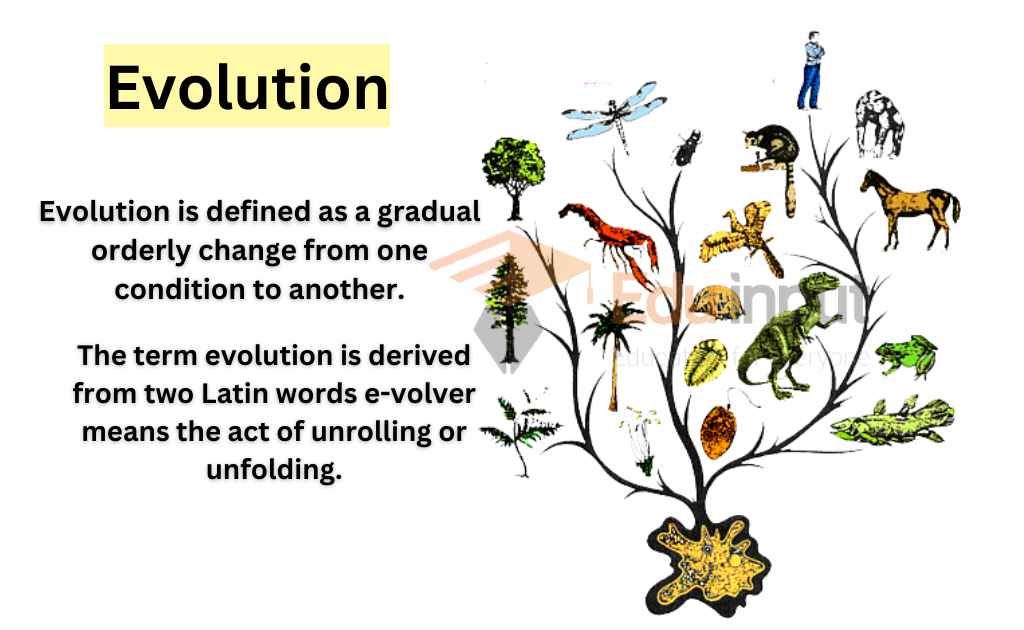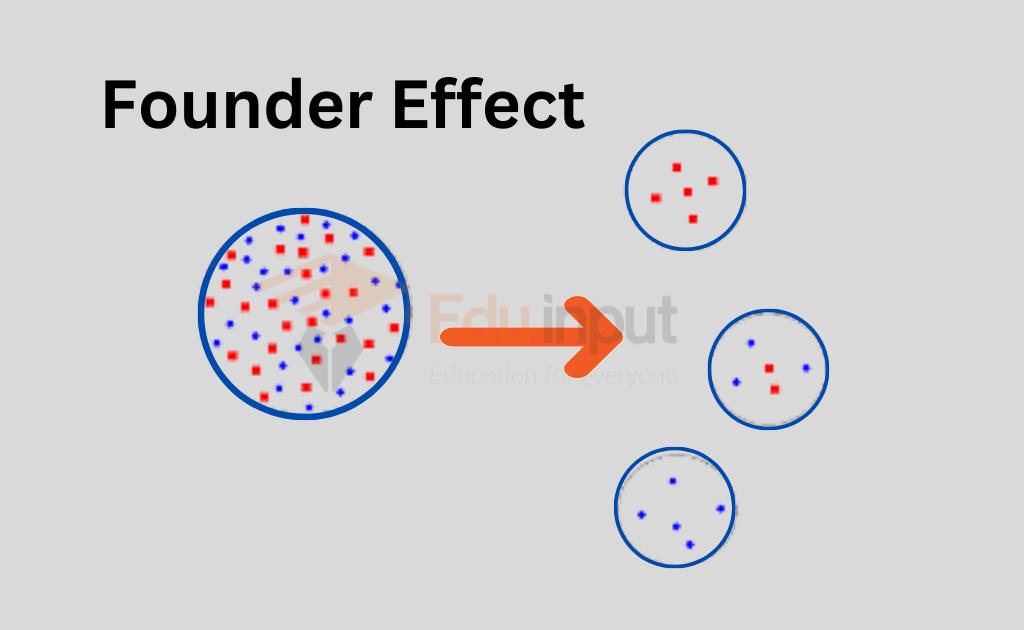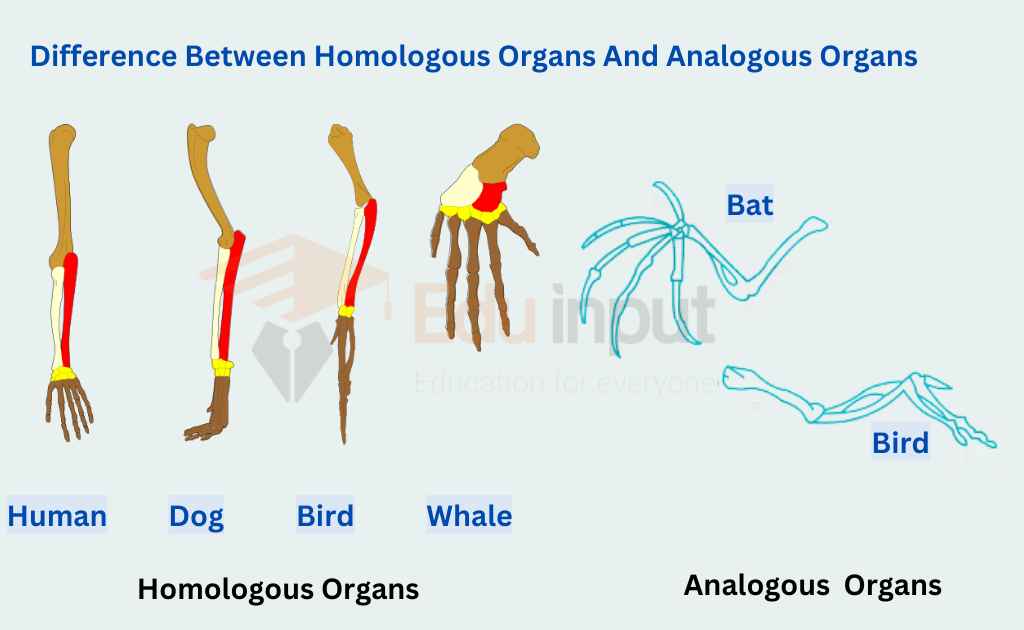Evolution And Origin Of Life
The term evolution is derived from two Latin words e-volver means the act of unrolling or unfolding. Higher kinds of life have allegedly evolved from lower ones.
This term was first used by Charles Bonnet (1720-1793). He was studying the progressive embryogenesis (in individuals) to the development of species. However, according to Savage (1969), the term evolution was first used by English philosopher Herbert Spencer.

Bases of Evolution
There are two observations regarding the living world:
a) The living world comprises a rich diversity of animal, plant, and microbial life.
b) All living organisms are well-fitted (or adapted) for the problems posed by their environments. It is possible that either the characters of organisms are fixed. They have remained so since the origin of life. Or they are mutable and their diversity and adaptability have unfolded progressively with time. The dynamic process is called evolution.
Evolutionary Biology
The branch of biology which studies concerning problems of chemical evolution origin of life and organic evolution and the origin of man and other present-day organismal species of planet Earth is called evolutionary biology.
Definitions of evolution
Evolution is defined by different biologists, based on their studies. Some of them are as below:
a) Evolution is defined as a gradual orderly change from one condition to another.
b) The principle of evolution gives the development of an entity over time through a gradual sequence of changes, from a simple to a more complex state. Different kinds of organisms that we see today have evolved from common ancestors over millions of years.
c) Charles Darwin (1859) has defined evolution as descent with modification. It means closely related species resembling one another because of their inheritance and differing from one another because of hereditary differences accumulated during the separation of their ancestors.
d) According to Dodson and Dodson, 1976, evolution is the process by which related populations diverge from one another, giving rise to new species (or higher groups).
Nature of origin of life
According to most evolutionary biologists, present-day varied forms of life on the planet Earth have evolved during the history of the earth by undergoing the following two steps of the evolutionary process:
Inorganic or Molecular Evolution and Origin of Life
The first step of evolution includes the development of non-living matter into living matter or the evolution of non-life into life. Chemical evolution occurred about 4600 million years ago. During this evolution:
1. Elements: Atoms of various elements were created by the accumulation of subatomic particles.
2. Simple inorganic molecules: The elements transformed into simpler inorganic compounds.
3. Organic micromolecules: Organic macromolecules like amino acids were first derived from basic inorganic molecules.
4. Organic macromolecules: The micromolecules developed into macromolecules like proteins by the self-assembly process.
5. Eobionts: Certain macromolecules developed the ability of self-duplication. They aggregated to form the first primitive living systems, called Eobionts.
6. Prokaryotes: Eobionts evolved into prokaryotic cells. It formed the kingdom Monera.
Organic and Biological Evolution and Origin of Species
The second step of evolution started from the end of chemical evolution (origin of life).
1. The concept of organic evolution tells that all the varied kinds of animals and plants have developed out of earlier types by natural, gradual but continuous changes. According to G.L. Stebbins (1976), organic evolution is a series of partial or complete and irreversible transformations of the genetic composition of populations.
2. It is based principally upon altered interactions with their environment. It consists chiefly of adaptive radiations into new environments. Adaptive radiations are adjustments to environmental changes that take place in a particular habitat. It gave rise to new ways of exploiting existing habitats.
3. These adaptive changes give rise to the greater complexity of developmental patterns through interactions between populations and their environment. The product of organic evolution is the origin of species or the evolution of old species into new species.
4. During organic evolution under certain environmental stresses certain autotrophic, heterotrophic, anaerobic, and aerobic prokaryotic cells of Kingdom Monera started symbiotic relations. They evolved into the eukaryotic plant and animal cells to form the kingdom Protista (Margulis, 1970).
5. Later on, Kingdom Protista evolved and gave origin to three Kingdoms-Plantae (Metaphyta). Fungi and Animalia (Metazoa) by adaptive radiation or cladogenesis.
Latest Research About Evolution And Origin Of Life
- The Fish Ladder Toy Model proposes a thermodynamically at equilibrium origin of life via lipid amphiphilic vesicles. It suggests a geographic catchment area for concentrating vesicles in an endoreic lake. The model can serve as a null hypothesis to test other hypotheses for the origin of life. [1]
- Scientists propose a new hypothesis for the origin of life on Earth, called the “nuclear geyser model,” which suggests that ionizing radiation from natural reactors provided the necessary conditions for life’s initial development. They also propose a three-step model for the emergence of the first life on Earth, based on the material cycle inside the nuclear geyser system. [2]
- Scientists argue that humans’ unique ability to engage in collaborative computation through instructive communication is the foundation of our cumulative cultures. This evolution was driven by two major transitions: the toolkit of mimesis and the invention of language. [3]
- Scientists investigate how anaerobic eukaryotes, relying solely on fermentation for energy generation, maintain their cell complexity despite lower ATP generation rates. Longer cell cycles compensate for reduced ATP generation, but ultimately constrain long-term evolutionary possibilities. [4]

 written by
written by 




Leave a Reply